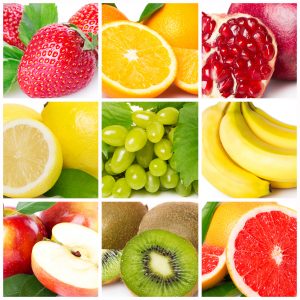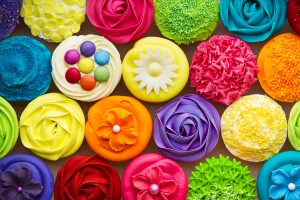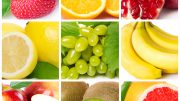Color Up Your Food and Dinner Plate for Weight Loss
When I started to research this as a topic after reading an article on colors of plates and weight loss, I thought this topic is crazy. The color of a plate is not going to cause someone to lose weight. What inherent property would a colored plate have that could introduce weight loss? It si not going to post your metabolism. Then it hit me. I had a class in advertising and psychology in college that discussed colors and what emotions they cause. This is possible.
Color is a sight sensation that we perceive based on the light sensory organs in our brains. Food color is important as a cue for flavors. We know that different flavors can induce satiety, but let’s face it, both an apple, red pepper, and tomato are red, but we do not perceive that many of these taste similar. That is not entirely what this statement means. Color of food color is not what sets the flavor but it does set your expectations about how the food will likely taste as well as the pleasure or disgust one might experience. It does not set what flavor you will taste. For example, have you ever looked at a red or green apple and started salivating at the thought of eating it. You expect that apple to be a juicy and sweet base don based experience and then you bite it. It was the most disgusting bitter apple you have ever eaten. The cue of the color made you think it would taste good.
Does color suppress or increase one’s appetite? Yes. I will use blue for example. Blue has been shown to not be an attractive food color and people naturally avoid it or eat less of it. The reason for this is that humans naturally avoid foods that are poisonous. We avoid blue foods because in nature, we equate blue with poison. What is natural is blue that humans eat? The answer is nothing that is natural except maybe blueberries and rare potatoes.
Research on Food and Plate Color:
- Color affects our perception of Flavor. The DuBose study looks at color and perception of flavor. They found that 20% of subjects tasted orange when the cherry-flavored drink was orange in color[1]. Another study from France looked at wine that was white and red. They found that the same wine tasted better to a significant portion of the population if it was colored red.
- Bowl Color can affect the perception of flavor. One study was done on popcorn that was sweet or salty being paled in a colored or white bowl. The study found that colored bowls made the sweet popcorn be perceived as saltier and the salty popcorn as being sweeter[2].
- Mug color can affect perceptions of the strength of coffee. Another study looked at coffee that was identical in every way being poured into three mugs that were blue, clear, and white. They found that the white mug was perceived to be significantly stronger and more bitter than its counterparts[3].
- Plate color matters. An awesome study was completed by Cornell University by Wansink and van Ittersum looked at plate color and found that if there was a low contrast between the plate color and food on it that subject ate 30% more food[4]. It in this study, the subject at 30% more Alfredo sauce and pasta if it was served on a white plate instead of a red one.
Recommendations on food and plate color:
- Spice up you meal with color food. The more color in your food, the multivitamins in your diet. I recommend natural colors from whole foods.
- Your plate should be a different contrast from your food. If the food and plate do not have a different contrast, research is proven that we tend to eat more food.
Referneces:
-
DuBOSE, CYNTHIA N., ARMAND V. CARDELLO, and OWEN MALLER. “EFFECTS OF COLORANTS AND FLAVORANTS ON IDENTIFICATION, PERCEIVED FLAVOR INTENSITY, AND HEDONIC QUALITY OF FRUIT-FLAVORED BEVERAGES AND CAKE.” Journal of Food Science. Wiley-Blackwell, September 1980. doi: 10.1111/j.1365-2621.1980.tb06562.x
-
Harrar, V, B Piqueras-Fiszman, and C Spence. “There’s More to Taste in a Coloured Bowl.” Perception 40, no. 7 (January 1, 2011): 880–82. [PubMed]
-
Van Doorn, George H , Dianne Wuillemin, and Charles Spence. “Does the Colour of the Mug Influence the Taste of the Coffee?” Flavour 3, no. 10 (2014): 3–10. https://flavourjournal.biomedcentral.com/articles/10.1186/2044-7248-3-10.
-
Van Ittersum, Koert, and Brian Wansink. “Plate Size and Color Suggestibility: The Delboeuf Illusion’s Bias on Serving and Eating Behavior.” Journal of Consumer Research. Oxford University Press (OUP), August 1, 2012. doi: 10.1086/662615











Be the first to comment on "Research Proven Weight Loss: Food and Plate Color"